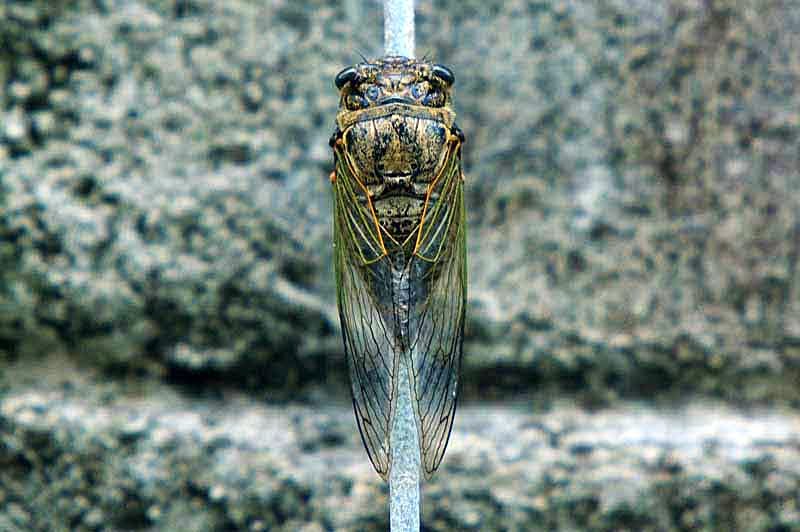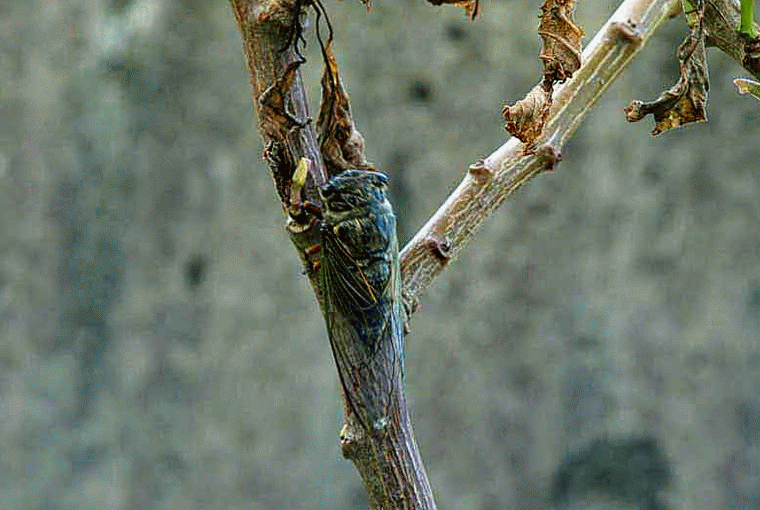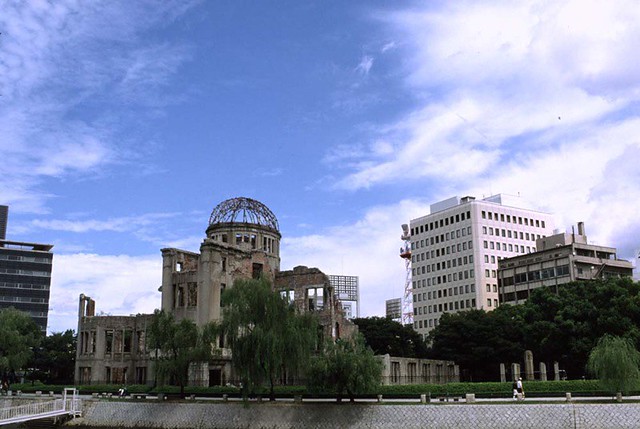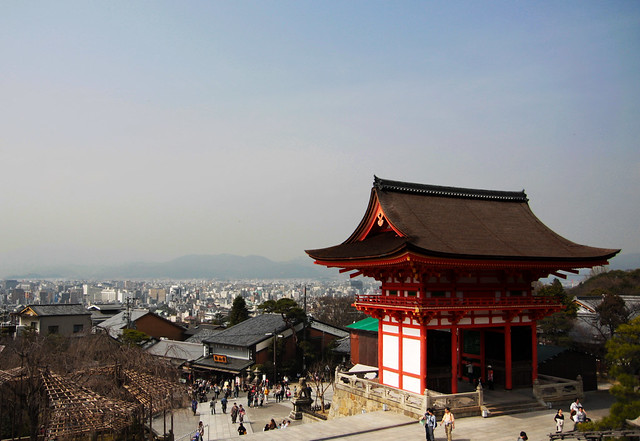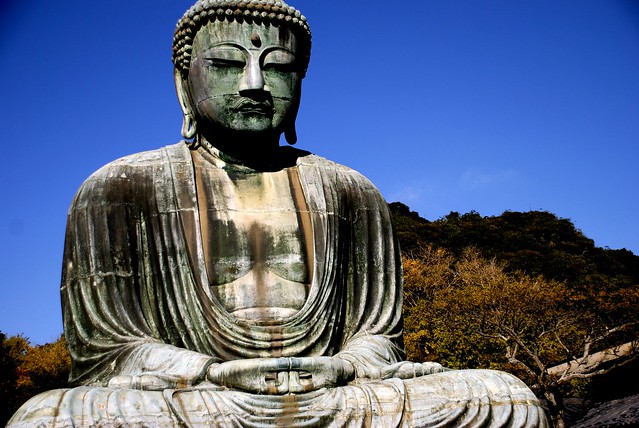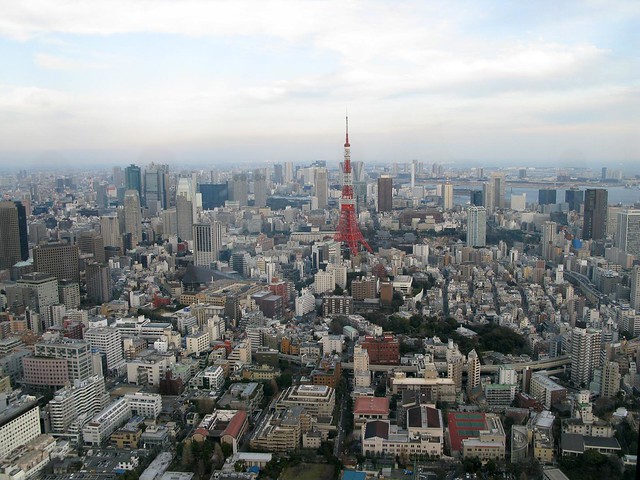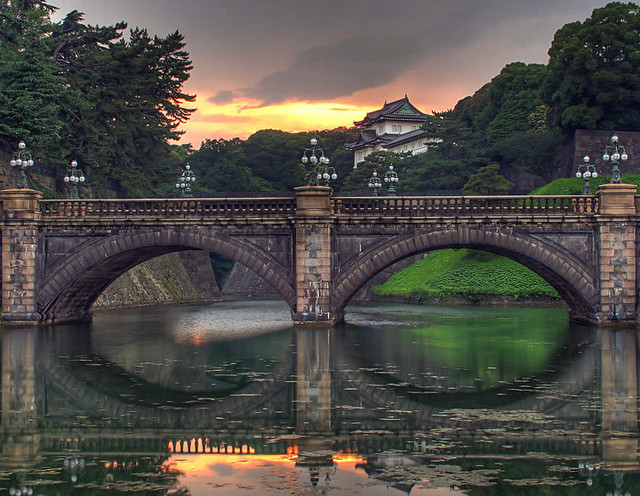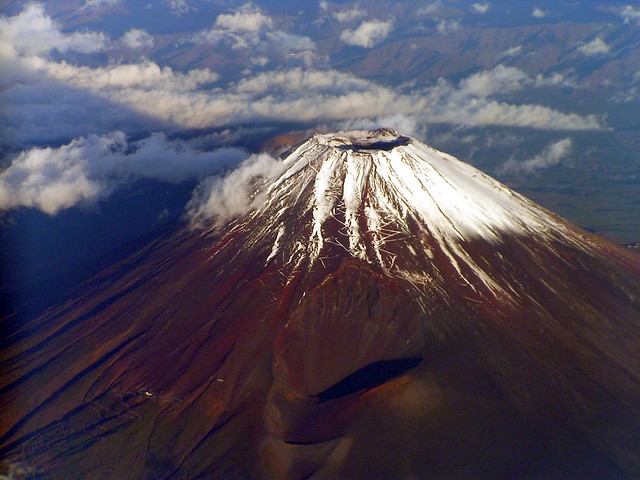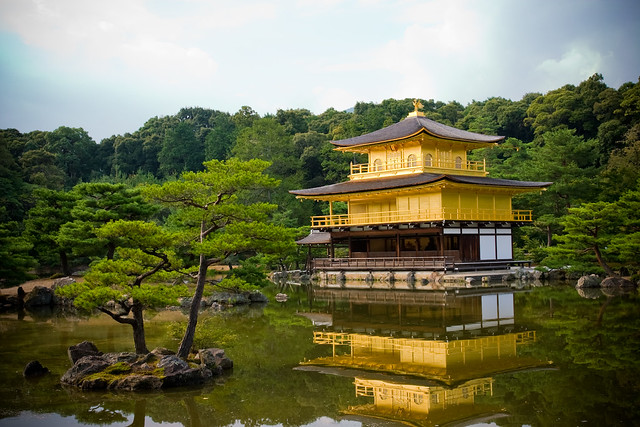Kinwashi Tour Japan Thread
-
-
 Video.自身ã�®å¥³æ€§å™¨ã�®ï¼“ï¼¤ãƒ‡ãƒ¼ã‚¿ã‚’é ’å¸ƒã�—ã�Ÿã�¨ã�—ã�¦ã€�ã‚�ã�„ã�›ã�¤ç‰©é ’布ã�®ç–‘ã�„ã�§é€®æ�•ã�•ã‚Œã�¦ã�„ã�Ÿæ¼«ç”»å®¶ãƒ»èŠ¸è¡“家ã�®ã‚�ã��ã�§ã�ªã�—å�ã�•ã‚“ã�Œã€�勾留ã�‹ã‚‰é‡ˆæ”¾ã�•ã‚Œã�¦ã�„ã�Ÿã�“ã�¨ã�Œï¼’ï¼�14年7月19日ã€�分ã�‹ã�£ã�Ÿã€‚今回ã�®é€®æ�•ã�¯å¤šã��ã�®äººã�®é–“ã�§å¤§ã��ã�ªè°è«–ã�«ã€‚ãƒ�ットã�®ç½²å��サイトã�§ã�¯ã€�釈放を求ã‚�ã‚‹ç½²å��ã�«ç´„2万件もã�®ç½²å��ã�Œé›†ã�¾ã�£ã�Ÿã€‚ã�Ÿã� ã€�今回ã�®é‡ˆæ”¾ã�¯ã€�ã�‚ã��ã�¾ã�§é€®æ�•ã�‹ã‚‰è£�判ã�¾ã�§ã�®å‹¾ç•™ã‚’å�–り下ã�’ã�Ÿã�¨ã�„ã�†ã�“ã�¨ã�§ã€�逮æ�•ã��ã�®ã‚‚ã�®ã�Œå�–り消ã�•ã‚Œã�Ÿã‚�ã�‘ã�§ã�¯ã�ªã�„。今後起訴ã�•ã‚Œã‚Œã�°è£�判ã�¨ã�ªã‚Šã€�有罪ã�¨ã�ªã‚‹å�¯èƒ½æ€§ã‚‚ã�‚る。果ã�Ÿã�—ã�¦ã‚�ã��ã�§ã�ªã�—å�ã�•ã‚“ã�¯ç„¡ç½ªã�‹ã€�有罪ã�‹ã€‚今後もè°è«–ã�¯ç¶šã��ã��ã�†ã� 。Sources: Japan Today, TomoNews
Video.自身ã�®å¥³æ€§å™¨ã�®ï¼“ï¼¤ãƒ‡ãƒ¼ã‚¿ã‚’é ’å¸ƒã�—ã�Ÿã�¨ã�—ã�¦ã€�ã‚�ã�„ã�›ã�¤ç‰©é ’布ã�®ç–‘ã�„ã�§é€®æ�•ã�•ã‚Œã�¦ã�„ã�Ÿæ¼«ç”»å®¶ãƒ»èŠ¸è¡“家ã�®ã‚�ã��ã�§ã�ªã�—å�ã�•ã‚“ã�Œã€�勾留ã�‹ã‚‰é‡ˆæ”¾ã�•ã‚Œã�¦ã�„ã�Ÿã�“ã�¨ã�Œï¼’ï¼�14年7月19日ã€�分ã�‹ã�£ã�Ÿã€‚今回ã�®é€®æ�•ã�¯å¤šã��ã�®äººã�®é–“ã�§å¤§ã��ã�ªè°è«–ã�«ã€‚ãƒ�ットã�®ç½²å��サイトã�§ã�¯ã€�釈放を求ã‚�ã‚‹ç½²å��ã�«ç´„2万件もã�®ç½²å��ã�Œé›†ã�¾ã�£ã�Ÿã€‚ã�Ÿã� ã€�今回ã�®é‡ˆæ”¾ã�¯ã€�ã�‚ã��ã�¾ã�§é€®æ�•ã�‹ã‚‰è£�判ã�¾ã�§ã�®å‹¾ç•™ã‚’å�–り下ã�’ã�Ÿã�¨ã�„ã�†ã�“ã�¨ã�§ã€�逮æ�•ã��ã�®ã‚‚ã�®ã�Œå�–り消ã�•ã‚Œã�Ÿã‚�ã�‘ã�§ã�¯ã�ªã�„。今後起訴ã�•ã‚Œã‚Œã�°è£�判ã�¨ã�ªã‚Šã€�有罪ã�¨ã�ªã‚‹å�¯èƒ½æ€§ã‚‚ã�‚る。果ã�Ÿã�—ã�¦ã‚�ã��ã�§ã�ªã�—å�ã�•ã‚“ã�¯ç„¡ç½ªã�‹ã€�有罪ã�‹ã€‚今後もè°è«–ã�¯ç¶šã��ã��ã�†ã� 。Sources: Japan Today, TomoNews -
http://blog.mikesryukyugallery.com/
Friday, July 18, 2014
Photos of Cicida (Tanna japonensis) Semi (セミ ) in Japan
When the thermometer is almost busting and it's near 98% humidity you'll hear them.This morning, I woke up late. The sun was already shining.The wife was in the kitchen and I asked her if it was raining outside.My hearing isn't all that great. It sounded like it was raining.The noise, was coming from the cicida bugs, she said.Out behind the office, I spotted this one on a trellis.Usually, they are hiding in trees and hard to photograph so, I grabbed a camera.Lots of people hate these bugs because they are so noisy.Kids, in Japan love them probably, because the sounds remind them of Summer Vacation.If you catch one, while it's making all the noise, it's sort of cool.They buzz and wiggle, tickling the palm of your hand. Kids enjoy stuff like that.It's fun to stuff one down the back of someone's shirt, too.This one wasn't making any noise.It flew from the trellis over to a plant in the shade.So, I was able to get a dozen quick photos and have this motion GIF made.Searching for some decent YouTube sounds of the bug didn't pan-out, too well.It would have been nice, to give you some of the sounds they make.But, I found something, even better. -
-
If you are a newcomer and got not much knowledges on Kyushu.
helpful tips.
Southern Kyushu is experiencing more visitors than ever before. This area has always been known for being an incredible place to experience, and with the full opening of the Kyushu Shinkansen (Bullet Train) network last year, ease of travel is the biggest reason for this sudden upswing. Incredible nature, relaxing hot springs, the home of exhilarating distilled potato shochu liquor, a friendly atmosphere, and an old-style nostalgic ambiance that sooths the soul... Are you ready to thoroughly enjoy the wonders of Kagoshima?
http://www.jnto.go.jp/eng/indepth/exotic/JapanesQue/1204/minamikyushu.html
Edited by kinwashi 13 Jul `13, 9:03PM -
From Chiran,
As like this destination,
this are aslo consider an attraction.
But, think this is up to individual,
for me i say no.
So we never cover this.
see the video.
and you make your decision.
-
If you decide to head for Kagoshima.
This kind of destination, you must consider.
Than you can tell people what is Kagoshima.
Why they are not the same as like other part of Japan.
video.
-
If you decide to head for Kagoshima.
This kind of destination, you must consider.
Than you can tell people what is Kagoshima.
Why they are not the same as like other part of Japan.
video.
-
-
Top 10 Most Popular Tourist Destinations In Japan
Most popular Japanese tourist destinations are the top 10 places for you to visit in Japan. There are so many worthy places to visit in Japan. However, due to limited vacation time, of course, you will not visit your favorite attractions? Here’s a top 10 most popular Japanese tourist destinations.
1. Visit the Site of Ancient Kyoto
Visit the site of Ancient Kyoto is one of the most popular tourist destinations in Japan. One of the icons in Japanese history was made in the city of Kyoto in the years 794-1868. The remnants of empire can be seen at Kinkakuji, classical building officials used gold plated shogun (general) is now converted into a Zen Buddhist temple. Overall, Kyoto has 17 World Heritage sites (including Kinkakuji and Ryoanji). Some of them are 2000 temples and shrines throughout the city and the parks that represent the vast heritage of Kyoto.
2. Overnight at Temple
Overnight at the temple there was one Japanese tourist most popular destinations. Before becoming a pilgrimage site, Mount Koya area formerly used to study Shingon Buddhism, Kobo Daishi where (9th century) was inspired to build a school in the middle of the cedars of antiquity. What’s interesting about this visit is the burial place of a frightening and almost primeval Okunoin as well as several temples in the Daishi. For guests can stay in one of the Koya mountain top temple.
3. Gallery Hop in the “Island of Art”
Gallery Hop in the “Island of Art” is one of the most popular Japanese tourist destinations. Three main galleries of art and a few small places to be the most important part of Naoshima are located in the Seto Inland Sea. It is a contemporary art center of Japan. The best galleries are designed by Tadao Ando Benesse House, a luxury hotel and the gallery involving artists such as David Hockney, Bruce Nauman, and Frank Stella.
4. Ski Niseko
Ski Niseko is one of the most popular Japanese tourist destinations. In Hokkaido there is a small ski resort town of Niseko in the three main ski resort Niseko Village, Niseko Annupuri, and Grand Hirafu / Hanazono. Exciting adventures offered are skiing, rafting, and mountain biking and kayaking.
5. Relived in a traditional inn
Traditional inn is one of the most popular Japanese tourist destinations. Although not cheap, the place of accommodation in Japan is able to provide beautiful memories of the experience or for its customers. To place a traditional inn, usually less than  ¥ 10,000 (Rp1, 1 million) last night. (* / X-13)
6. Soak in the Hot Spring area
Soaking in Hot Spring Area is one of the most popular Japanese tourist destinations. Wishful surprised with the habits of residents in Japan, when a stranger bathe together naked. Dogo one of the most famous resorts in the country which has a large hot spring baths for many people.
7. Explore the East Tokyo area
East Tokyo region is one of the most popular Japanese tourist destinations. As a tourist, you can go to Sensoji, a Buddhist temple in Asakusa. This is part of the city’s main entertainment district. The other place is Hanayashiki Amusement Park. There is a rollercoaster game here.
8. Climb Mount Fuji
Climb Mount Fuji is one of the most popular Japanese tourist destinations. Fuji mountain peak is the most popular routes for hiking. Visitors have the option to go up easily, or run for a week with a more challenging area.
9. Travel to Hiroshima Peace Memorial Park and Museum
Hiroshima Peace Memorial Park and Museum is one of the most popular Japanese tourist destinations. This place is dedicated to the victims of the atomic bomb (August 6, 1945) ago. Peace Memorial Park and Museum is a monument that reminds a sense of fear of nuclear weapons. There is also the Children’s Peace Monument was built to commemorate one of the many children who died of leukemia in all of Japan.
10. Japanese Culinary
Japanese Culinary is one of Japan’s tourist destinations. Japan is famous for delicious foods such as sushi, tempura and kaiseki. To get a menu of ramen noodles, people are usually quite a queue, despite the long hours. Japanse culinary is one of the most popular Japanese tourist destinations.
tags: Climb Mount Fuji, Explore the East Tokyo area, Gallery Hop in the "Island of Art",Japan's tourist destinations, Japanese Culinary, most popular japanese tourist destinations,Overnight at Temple, Relived in a traditional inn, Ski Niseko, Soak in the Hot Spring area,Travel to Hiroshima Peace Memorial Park and Museum, Visit the Site of Ancient Kyoto
Related For Top 10 Most Popular Tourist Destinations In Japan
-
Most Popular Tourist Places of Japan
0Thought you wanted know the most visited or popular attractions for foreign tourist in Japan, check out this page, by TripAdvisor. But since the page is in Japanese, I will gladly put the list in this page in English.
So I’ll try to put put 5 places and the rest will be posted next time :), so please Enjoy!
1. Fushimi Inari-taisha (�見稲�大社)
Is the head shrine of Inari, located in Fushimi-ku, Kyoto, Japan. The shrine sits at the base of a mountain also named Inari which is 233 metres above sea level, and includes trails up the mountain to many smaller shrines which span 4 kilometers and takes approximately 2 hours to walk up.

2. Hiroshima Peace Memorial Museum (広島平和記念資料館)
The Hiroshima Peace Memorial Museum is museum located in Hiroshima Peace Memorial Park, in central Hiroshima, Japan dedicated to documenting the atomic bombing that occurred with the additional aim of world peace. The museum was established in August 1955 with the Hiroshima Peace Memorial Hall (now the International Conference Center Hiroshima). It is the most popular of Hiroshima’s destinations for school field-trips from all over Japan and for international visitors. 53 million people had visited the museum from its opening in 1955 through 2005. The number of visitors is over one million per year.

3. Itsukushima Shrine (厳島神社)
Is a Shinto shrine on the island of Itsukushima (popularly known as Miyajima), best known for its “floating” torii gate.[1] It is in the city of Hatsukaichi in Hiroshima Prefecture in Japan. The shrine complex is listed as a UNESCO World Heritage Site, and the Japanese government has designated several buildings and possessions as National Treasures.

4. Kinkaku-ji (金閣寺)
Literally means “Temple of the Golden Pavilion”, officially named Rokuon-ji (鹿苑寺, lit. “Deer Garden Temple”), is a Zen Buddhist temple in Kyoto, Japan. The garden complex is an excellent example of Muromachi period garden design. The Muromachi period is considered to be a classical age of Japanese garden design. The correlation between buildings and its settings were greatly emphasized during this period.[4] It was a way to integrate the structure within the landscape in an artistic way. The garden designs were characterized by a reduction in scale, a more central purpose, and a distinct setting. A minimalistic approach was brought to the garden design, by recreating larger landscapes in a smaller scale around a structure.
It is designated as a National Special Historic Site and a National Special Landscape, and it is one of 17 locations comprising the Historic Monuments of Ancient Kyoto World Heritage Site. It is also one of the most popular buildings in Japan, attracting a large number of visitors annually.

5. T�dai-ji (�大寺)
Is a Buddhist temple complex located in the city of Nara, Japan. Its Great Buddha Hall (大ä»�殿 Daibutsuden), houses the world’s largest bronze statue of the Buddha Vairocana, known in Japanese simply as Daibutsu (大ä»�). The temple also serves as the Japanese headquarters of the Kegon school of Buddhism. The temple is a listed UNESCO World Heritage Site as “Historic Monuments of Ancient Nara”, together with seven other sites including temples, shrines and places in the city of Nara. Sika deer, regarded as messengers of the gods in the Shinto religion, roam the grounds freely.

Text & Images source: Wikipedia
-
GROOVY OSAKA: SHOPPING IN SHINSAIBASHI-SUJI
Posted by Quincy B. Fox on July 19, 2014

If you follow the bright neon glow away from Dotonbori over the canal, you will find yourself in Shinsaibashi-suji, a very tourist friendly shopping street, with free maps, free wifi, and special tourist discounts at certain locations if you show your passport.
Whether you like luxury goods, discount items, or various types of food, you will find something to enjoy in Shinsaibashi-suji.
Official Shinsaibashi-suji Website:
Daimaru
Voted as one of the most beautiful buildings in Japan, the Daimaru department store is home to high end and discount goods alike. The building was built in 1933 and is a great example of late Taisho and early Showa era architecture. Whether you are looking to shop, take pictures, or just use the very clean restrooms, Daimaru has a lot to offer. However, please remember that when using the escalators, Osakans stand to the right and pass on the left. This is the opposite of the rest of Japan.
If you are interested in viewing the architecture, you may want to visit Daimaru as soon as possible. The company has been considering whether to demolish the building despite its historic value. As of yet, no decisions have been made.
Daimaru Access:
www.daimaru.co.jp.e.md.hp.transer.com
1-7-1, Shinsaibashisuji, Chuo-ku, Osaka-shi, Osaka
Hours: 10:00 – 20:00 (foreign exchange services until 6pm)
Conveyor Belt… What?
What could possibly be more exciting than conveyor belt sushi? How does conveyor belt fried skewers sound? While it’s not the sort of conveyor belt where you grab random food as it passes, this delivery system is certainly a fun way to get your order. The newest Daruma kushikatsu store has a miniature railroad around the interior with each table labeled as an actual station in Osaka.
The menu is entirely electronic and multilingual, so ordering is quite easy. After inputting your order, a staff person will deliver your drinks. When the food is ready, it will arrive via miniature train at your table’s station. You will need to take all the fried skewers off the train tray and put them on tray already at your table. When you are done, you will need to press the red button to send the train back to the kitchen. If you get confused, there are always staff people to help. Please remember that there is no double dipping. If you want more sauce on your skewer, use the free cabbage to spoon the sauce onto the skewer.
Daruma Shinsaibashi Access:
www.kushikatu-daruma.com
1-5-17 Shinsaibashisuji, Chuo-ku, Osaka-shi, Osaka
Hours: 11:00 – 22:30Mexican Food
Well done Mexican food is very hard to find in Japan. In the past, I have been given tacos made with ketchup. Even people who don’t know much about Mexican food can realise that ground beef with ketchup is not taco meat. I had almost given up on Mexican restaurants here, but Shinsaibashi’s El Pancho changed my mind completely.
El Pancho has authentic Mexican food with some Tex-Mex variations on the menu. The head of the restaurant worked in the food industry in Mexico and obviously learned a great deal about the cuisine in the process. While individual dishes on the menu may not be entire meal portions for some, the sets are much larger than typical Japanese portions and are reasonably priced. Happy hour is actually several hours from 11:30am to 5pm, and you can get pitchers of margaritas and daiquiris.

For a non-alcoholic twist, the frozen lemonade is nice. The only downside to the restaurant is that it is small and has an even smaller amount of staff. A reservation is always helpful to avoid a very long wait or denied entry. Due to the few staff members, be prepared for slow service when the place is busy.
El Pancho Access:
Shinsaibashi Tower Building 8F
1-10-1 Shinsaibashisuji, Chuo-ku, Osaka-shi, Osaka
Hours: 11:30 – 23:30 (Last Order – 22:30)Satisfy Your Sweet Tooth
Osakans love their candy (���ゃん, amechan) and desserts in general. Along Shinsaibashi-suji, you will find many types of desserts for sale. There are crepes, cakes, tarts, waffles, and more. When frozen yogurt was introduced to Japan as being a healthier alternative to ice cream, Osaka jumped on board. In the past few years, a frozen yogurt craze has swept all over Osaka. While there are several different shops in the city, there is one in Shinsaibashi that is called Yo.Cafe Partyland. Similar to most of the frozen yogurt shops around the city, you pay by the weight of your yogurt with any toppings you want to add.
Yo.Cafe Partyland Access:
www.partyland.co.jp
1-8-30 Shinsaibashisuji, Chuo-ku, Osaka-shi, Osaka
Hours: 11:00 – 22:00 -
Most Popular Tourist Places of Japan – Part II
SOURCE: LEARNJAPANESE123Continuing with the previous post Most Popular Tourist Places of Japan, I’m posting the next 5 most popular touristic places of Japan.
If you have had the chance to visit any of these places, please share your experience in the comments section below
6. Koyasan Okunoin (高野山)
Mount K�ya (高野山 K�ya-san) is the name of mountains in Wakayama Prefecture to the south of Osaka. Also, K�ya-san is a modifying word for Kong�bu-ji (金剛峯寺).
First settled in 819 by the monk Kūkai, Mt. K�ya is primarily known as the world headquarters of the K�yasan Shingon sect of Japanese Buddhism. Located in an 800 m high valley amid the eight peaks of the mountain (which was the reason this location was selected, in that the terrain is supposed to resemble a lotus plant), the original monastery has grown into the town of K�ya, featuring a university dedicated to religious studies and 120 temples, many of which offer lodging to pilgrims.

7. Kiyomizu-dera Temple (清水寺)
Officially Otowa-san Kiyomizu-dera (清水寺) is an independent Buddhist temple in eastern Kyoto. The temple is part of the Historic Monuments of Ancient Kyoto (Kyoto, Uji and Otsu Cities) UNESCO World Heritage site.

8. Shinjuku Gyoen National Garden (新宿御苑)
Is a large …CONTINUE READING
The Hydrangea Road
SOURCE: GAIJIN POTThe rainy season or tsuyu (梅雨) in central Japan is typically from mid-June to mid-July, and provides a little bit of relief before the heat of late July and August strikes. All this rain doesn’t mean you need to be stuck inside as there are many things you can enjoy during this time of the year in Japan. A favourite of mine are the beautiful hydrangea or ajisai (紫陽花) in Japanese.
The hydrangea which is native to East Asia is a symbol of June and the rainy season in Japan. They bloom from May to July, depending on the region in Japan with many cities having flower parks where you can enjoy these colourful flowers. A popular destination to view them is Kamakura in Kanagawa Prefecture close to Tokyo with its many temples and stunning ajisai gardens.
The rain of the rainy season is beneficial to the flowers and the more the better as the flowers grow a deeper colour the more the rain falls on them. I actually prefer them in the rain where the spots of rain on the flowers and morning mist make them even more beautiful.
The Hydrangea Road is a 24 kilometer-long stretch …CONTINUE READING
Groovy Osaka: Shopping in Shinsaibashi-suji
SOURCE: GAIJIN POTIf you follow the bright neon glow away from Dotonbori over the canal, you will find yourself in Shinsaibashi-suji, a very tourist friendly shopping street, with free maps, free wifi, and special tourist discounts at certain locations if you show your passport.
-
- See more at: http://www.touropia.com/tourist-attractions-in-japan/#sthash.B7iwJQlQ.dpuf
-
Natural Daily Cleanse is the incredible colon purging containers which is created to detoxify the assortment of a single person. The result is demonstrated to give you solid procedure of colon purging and gives you a stunning general feeling. This purging supplement further helps individuals to get the thin, trim figure and guarantees them to lead a cheerful and healthier life.
For More Information,Visit==> http://safercolonguide.com/natural-daily-cleanse-review/ -
- Home

- Japan City Guides

- Okinawa Guide
 Japan City Guides: Okinawa
Japan City Guides: OkinawaHistory of Okinawa | Okinawan Culture | Okinawan Food | Access
Okinawa 沖縄
- Japan's southernmost prefecture
- capital city: Naha
- population 1.3 million
- area 2,271.30 km² (877 sq miles): Japan's fourth smallest prefecture
- former independent Kingdom of Ryukyu, under Japanese control since 1871
- white sand beaches, sub-tropical climate: an international resort destination
- world class coral reefs, clear water: a diving and snorkeling mecca
- unique culture different from that of mainland Japan
- famous for its distinctive cuisine, delicious and considered healthy
- more than 3,000,000 visitors a year

Okinawa World, Okinawa

Okinawa is the southernmost prefecture of Japan. It occupies the southern part of the Nansei (Southwest) chain of islands which stretches over 1,200 km from the southern tip of Kyushu to within 100 km of Taiwan.
Okinawa prefecture consists of around 160 of these islands, 46 inhabited. The prefecture takes its name from the largest and most populous of the three groups of islands that form it, the other two being the Miyako and Yaeyama Islandsgroup. The Okinawa group is centered on the largest island in the prefecture, Okinawa Island; the Miyako group on Miyako Island; and the Yaeyama group on Ishigaki Island.

Lying at roughly the same latitude as Hawaii, Florida, and the Bahamas, Okinawa enjoys similar mild sub-tropical weather. The yearly average temperature is about 24°C (75°F). The highest temperature in the summer is 35°C (August) and in winter never dips below 10°C (50°F) (January).
It rains almost half the days of the year, and the rainy season is usually in May, and lasts about a month. Annual rainfall is 1,800 mm. Humidity is high throughout the year. Okinawa lies in the path of the East Asian Typhoon System, and from July through November may be hit by typhoons and monsoon rains.
History of Okinawa

Humans are believed to have settled on the Okinawa islands about 4,000 years ago. There was some migration from southern Kyushu to the northernmost islands, but the largest migrations came from Melanesia to the south.
In the 11th century castles began appearing around the islands and all the islands became unified under the Sho Dynasty in the 15th century. Known as the Ryukyu Islands, the 15th and 16th centuries are considered the Golden Age of Okinawan history, when the islands flourished through maritime trade between Southeast Asia, China, Korea, and Japan.
In the early 17th century Japanese from Satsuma invaded and began to exert more control over the islands, though a tributary relationship with China continued to operate. Commodore Perry called in the Ryukyu islands on his way to Shimoda in the 1850s.
In 1879 Japan abolished the Okinawan royalty and formally annexed Okinawa as a Japanese prefecture. Suppression of Okinawan language, customs, and culture followed, and in response to a ban on Okinawans owning weapons they invented the martial art of karate.

New Year Ceremony at Shuri Castle, Naha, Okinawa

Shuri Castle, Naha, Okinawa
In the closing stages of the Pacific theatre of World War II, Okinawa was the site of one of the bloodiest campaigns of the war, with both the American and Japanese militaries suffering heavy losses. Hardest hit though were the Okinawan civilians caught in between, and it is estimated that one third of the Okinawan population died in the campaign, many through suicide 'encouraged' by the Japanese.
Following the war, Okinawa was under the control of the U.S. until 1972 when it reverted to Japanese control. There remains a sizeable American military presence on the islands and continuing tensions between the Okinawan authorities and inhabitants and the American military on one hand and between Okinawans and mainland Japanese politicians who broker the deals that keep a US presence on the islands.
Okinawan Culture
Okinawa's unique culture came about from the diverse influences of the many cultures of those she traded with, although Chinese culture dominated. Many elements of Chinese culture entered Japan through Okinawa, including Dragon Boat Racing, and the Lion Dance.
Okinawan dance is still very popular, incorporating Chinese, Japanese, and South East Asian elements in a lively mix, and is performed all over the islands. Okinawan music is enjoying somewhat of a boom, not only in Japan but globally, and often includes the distinctive sound of the sanshin, a snakeskin-covered string instrument similar to a banjo that was originally introduced from China.
Okinawan Music CD ReviewsMany traditional crafts including pottery and laquerware are still produced, but Okinawa is most famous for its distinctive woven and dyed fabrics.

Tofu Champuru
Food in Okinawa
Okinawan food also reflects the diversity of cultural influences that have affected it over the centuries. Being islands, seafood dominates, together with sweet potato and dofu as staples. Dofu is Okinawan tofu, is firmer than Japanese tofu, and also saltier, as it is made with seawater.
The preferred meat in Okinawa is pork. Probably the best-known Okinawan food though is goya (bitter melon) which, even though very bitter, is consumed widely and is attributed by many to contribute not only to Okinawans' extremely long lifespan (81.2 years according to 1996 statistics: the longest in the world), but also to their equally long 'health span' (i.e. lack of disease), which also leads the rest of the planet.
Places of interest
Naha
Fukushu-En Garden is a huge garden in Chinese style incorporating architecture of different Chinese ages and traditions. Near Kenchomae monorail station.Tsuboya Pottery Museum displays the history of Okinawan pottery. Near Makishi monorail station.
Kokusai Dori, (i.e. 'International Street') in downtown Naha is the main shopping area in Naha, and includes many restaurants and clubs as well as souvenir shops and hotels.

Shuri Castle and environs is probably the major tourist site in the Naha area. For hundreds of years this was the royal seat of the Ryukyu dynasty. The area is filled with historic sites, although most are reconstructions, following the widespread destruction of World War II. The castle itself is a unique mix of Chinese, Okinawan, and Japanese styles and is a World Heritage Site.
Tamaudun Royal Mausoleum, a World Heritage site, was built into the rocky hillside in 1501 for an Okinawan king. Nearby is the Okinawa Prefectural Museum, and Shikinaen Garden.
Southern Okinawa was the site of the biggest battles during World War II, and there are many sites commemorating the war including the Himeyuri Monument, Himeyuri Peace Museum, the Peace Memorial Park and Mabuni Hill.

Nearby is Okinawa World, a recreation of a traditional Okinawan village with demonstrations of traditional crafts and culture. It also includes Gyokusendo, the longest limestone cave in East Asia, the first 890 meters being open to the public and the Habu Center - dedicated to the habu snake.
Cape Chinen forms the southern tip of Okinawa and is renowned for its reefs and marine environment. The Chinen Marine Leisure Center runs glass-bottomed boat tours as well as trips to a secluded island off the coast for diving, fishing, and swimming. The Okinawan sacred site ofSefa Utaki in in this area.
Northern and Central Okinawa
Southeast Botanical Gardens has thousands of tropical flowers, hundreds of tropical fruit trees and many other exotic plants occupying its 400,000 square meter expanse.
Fukushuen Chinese Garden, Naha, Okinawa

Beach and sea on Taketomi Island
Ryukyumura Village has examples of seven different styles of traditional Okinawan houses, as well as displays of traditional crafts.
Ocean EXPO Park is the largest theme park in Okinawa and was built for Ocean EXPO in 1975.
Okinawa Churaumi Aquarium boasts the largest acrylic panels in the world and is known for raising mantas and whale sharks in captivity.
Okinawan Islands
Miyako Island
About 250 km (155 miles) southwest of Okinawa Island. Excellent beaches for swimming including Sunayama Beach and Maehama Beach. Vantage points for stunning coastal scenery such as Muiga Cliff and Higashi Henna Cape. It is famous for its Miyako jofu fabric. An international triatholon is staged here every April. Also, check out the Miyako City Tropical Garden with its over 40,000 varieties of tropical flora. There are many hotels and minshuku. There is only one regular bus line, but it is infrequent. Travel by taxi, rental car, rental motorbikes or bicycle is the recommended option. 45 mins by plane from Naha, and 20 hours by ferry. There are also direct flights from the mainland.Ishigaki Island
About 120 km (75 miles) southwest of Miyako Island is the gateway to the other Yaeyama islands. Beautiful white beaches, especially Sukuji Beach, perfect for swimming, diving, and fishing. Black pearls, unique to this island, are cultured in Kabira Bay, an especially scenic area. There are several hotels and a couple of youth hostels. Transportation is by taxi, tour bus, rental car, or rental bicycle. 1 hour by plane or 19 hours by ferry from Naha.Taketomi Island
Only 9 km (5² miles) in circumference, and is formed completely of coral. There is one youth hostel and several minshuku. Transportation around the island is either by rental bicycle or buffalo cart. 10 minutes by ferry from Ishigaki Island.
Taketomi Island, Okinawa
Iriomote Island
As close to the archetypal "desert Island" as it comes. Most of Iriomote Island (Iriomote-jima) is covered in jungle of mostly mangrove, palm, and banyan trees. In its 300+ km² (116 sq miles) live only 2,000 people. There is little transport, but there are several youth hostels, a handful of resort hotels and a couple of minshuku. Unspoilt nature, tranquility, and Japan's longest coral reef are the main attractions here. 40-50 minutes by ferry from Ishigaki Island.Access - Getting to Okinawa
Naha, the capital city, on Okinawa Island, is the transportation hub for the islands with short-hop flights to the other Ryukyu islands: Amami Oshima, Ishigaki, Miyako, Kumejima, Yoron, Yonaguni, Minamidaito and Kitadaito.
Air
Frequent direct flights to Naha leave from Tokyo (both Haneda and Narita airports), Osaka, Fukuoka, and Nagoya. Less frequent direct flights leave from many other Japanese cities including Kobe,Sendai, Niigata, Shizuoka, Takamatsu, Hiroshima, Kagoshima, Kumamoto and Nagasaki. There are also flights from Taiwan and other mainland Asian cities. There are direct flights to Miyako Island from Tokyo and Osaka. Flights to Ishigaki Island from Nagoya and Fukuoka go via Naha.
From Naha Airport
From Naha Airport to central Naha there is the choice of bus (20 minutes), taxi or Monorail. Buses #23, #25, #99, #111, #113, #120 & #123.
The Okinawa Monorail (Yui Rail) runs approximately 13km and has 15 stops between Naha Airport and Shuri. (The line will expand 4km to Uranishi in the future). The complete journey takes 27 minutes and costs 290 yen. To Kencho-mae (Prefectural Office) the travel time is only 6 minutes from the airport.
Ferries
Ferries for Naha leave from Tokyo, Osaka and Kagoshima. Ferries from Kobe, Hakata, Miyazaki and Nagoya are now discontinued. Journey time from Kagoshima is 19 hours, and from Tokyo 44 hours. See our Japan travel section for further details.
Transportation within Okinawa
Regular flights and ferry services connect Naha with the other islands in the prefecture. Other than the recently opened monorail that connects Naha with the airport, there are no trains on Okinawa, so transportation is limited to bus, sight-seeing taxi (English-speaking), and rental car.
Okinawa Map
View Okinawa Map in a larger map
Book Hotel Accommodation in Okinawa Japan
Hostels in Okinawa - Hostelworld
Rent A Mobile Phone
Rent A Mobile Phone in Okinawa
Books on Okinawa & Japan
Read more: http://www.japanvisitor.com/japan-city-guides/okinawa-guide#ixzz38I973bSi - Home
-
- Fukuoka is a diverse mix of modern day city and rich natural beauty. A vibrant place, the gateway to Kyushu.
- Oita is blessed with an abundance of hot springs. Come here to enjoy the onsens, countryside and food.
Famous hot springs: Kurokawa, Beppu, Yufuin. - Saga 's ceramics are world famous. Visit the pottery towns of Karatsu, Arita and Imari. Saga also offers an amazing selection of hot springs.
- Nagasaki is located in the northwest part of Kyushu, has an incredible history and has close ties to Europe and China. Learn about the opening of Japan to the outside world here.
- Kumamoto is blessed with magnificent and abundant nature and famous for its amazing active volcano Mt Aso, and wonderful onsen.
- Miyazaki is located on the south eastern coast of Kyushu, home to beautiful beaches and golf courses.
- Kagoshima prefecture is one of Kyushu's best tourist destinations: natural heritage Yakushima Island, and active volcano Sakurajima.
-
Kyushu Cuisine
KYUSHU CuisineKyushu, has beautiful coastlines and inland mountain regions, and from this nature the Kyushu take pride in producing the best food and drink in Japan.
From the sea there is plentiful access to fresh seafood, producing the best sushi, sashimi and cooked fish in Japan.
The water running from the mountains is clear and rich in minerals which gives the alcoholic Japanese sake and shochu produced a unique delicious flavor.
The green tea fields also produce some of the best green tea in Japan.
Each region of Kyushu has a famous food or drink that they can boast about.
Ramen(thin noodles served in a salty soup), are available all over Japan, but people come from all over Japan to eat the “tonkotsu” type available in Fukuoka.Kanzaki is a town which specializes in the production of light, fresh somen noodles(noodles usually eaten cold in the summer and occasionally hot in winter).Spring water from the Sefuri mountain range and flour harvested from the Saga plains make for a distinctly aldente noodle.
Nagasaki, being the western most part of Kyushu, and the closest to mainland asia(Korea and China) has a very diverse ethnic population. The Chinese settlers brought with them various Chinese foods, and from the mix of Japanese and Chinese palettes was born Nagasaki Champon.Champon is made by frying together pork, seafood, and vegetables. Then adding this stir fry to a base chicken/pork soup stock, and then adding thin champon noodles.
The Sasebo area started to take on an American influence around 1950. At that time, American Marines stationed in Nagasaki taught the people and restaurants of Sasebo how to make an American hamburger. Indulge yourself with a Sasebo burger!Slices of raw yellowtail fish, that have been marinated in a soy sauce/sugar/vinegar/sake mix are served over hot rice. Also in the dish are things like green onion, dried seaweed, and sesame seeds.Basashi is a well-known local specialty of Kumamoto.
It is usually served in a similar way to Japanese raw fish, with soy sauce, chopped green onion, and spices such as ground ginger and garlic.
The marbled cuts of horse meat are surprisingly light when served raw as sashimi due to the high polyunsaturated fat content. Basashi is also popular served on vinegared rice as sushi.Miyazaki Prefecture is the second largest producing area of the Japanese black cow. The warm climate and lush countryside is very suited to producing high quality beef. The Japanese beef producing standards are very high and only the farmers who strictly adhere to standards can have their beef given the “Miyazaki-gyu” (Miyazaki beef) stamp of approval.Kagoshima “Kurobuta” (black pig) pork is famous throughout Japan. The Berkshire black pig breed (which was imported from England) stands out from other pig breeds for its juiciness, flavor, and tenderness, it is pink-hued and heavily marbled. Which makes it wonderfully suited to the Japanese style of meat cooking “shabushabu”. -
Received a letter from Immigration & Checkpoint Authority (ICA).
That a parcel came from Japan for me.
Parcel Detained for Examination.
Please arrange to collect the item(s) with this letter from the indicated office personally (or your authorised representative) within 14 days from the date of notification.
I, will be going to see what is all about tomorrow.
What parcel and who is the sender.
-
Fukuoka Ramen
-
I, always go for this when i am in Japan.
Originated from Fukuoka.
Ichiran (一è˜ãƒ©ãƒ¼ãƒ¡ãƒ³) is Ichiban! : The Ichiran Ramen Dining Experience
Sep 9th, 2009 by kaeru.People from Fukuoka pride themselves with their cuisine. This is not simply local bias, but a fact confirmed by Monocle Magazine which states that Fukuoka is where the culinary conscious crowd of Tokyo go for their gastronomic delight. That is right, residents of the city with the most number of Michelin star restaurants fly to Fukuoka for their food cravings.
Fukuoka is known for many dishes but what stands out is its Ramen, particularly tonkotsu (pork bone) ramen. I will go as far as saying that pizza is to Italy, as tacos are to Mexico, as ramen is to Fukuoka! Thus, no trip to Fukuoka is ever complete without trying out Fukuoka Ramen. The Ramen experience is such an amazing experience that I recommend complete focus on the ramen, ignoring all distractions around you. Fortunately, one ramen shop knows exactly how to make you do this.
Ichiran Ramen(一è˜ãƒ©ãƒ¡ãƒ³) is a Fukuoka based ramen chain that not only makes one of the best tonkotsu ramen in Fukuoka, but also provides the customer with a unique experience in ramen dining. Its freshly handmade noodles and its special sauce made of red chili and more than 30 other ingredients, cooked slowly over several days and nights, make it a landmark in Fukuoka.
The ordering system is also unique. You first pay for your order at a vending machine located at the entrance of the restaurant, and fill out a form on what type of ramen you want (tenderness of noodles, amount of spice, amount of onions, level of flavor etc.). Once you are given cubicle (yes, a cubicle, the better to focus, remember?), you hand over your sheet and wait for your dish to be served. No need to talk to anyone, handy for you non-Japanese speaker you. The website interesstingly has this to say about this system: “Since you can order without having to raise your voice, this is an especially popular system with our female customers.”
It is quite a unique experience, and while the restaurant is English-speaker friendly, the fast paced nature of it might just make you confused. So, to better prepare you for your first Ichiran experience, we want to share with you a little “How to Order at Ichiran Ramen” Guide we made:
1. Pick what you want to order. (Clue: Make sure to order Ramen): You can also order side dishes such as egg, extra noodles, extra onions etc.
2.) Pay: Insert the corresponding amount and get your food stub.
3. Wait for space to be available. Each square represents a seat on the restaurant. In this particular branch (Hakata) they are divided into three rows. A lit square means that a seat is available. In this case, Seats 9 and 6 on Row 3 are available. If there are two or more in your party, you can request to be seated together. In this case, others may be asked to go ahead of you until consecutive seats are available.

4. Once you are called, enter the corresponding hall and find your assigned seat. You will then wonder if you are about to take an exam. Coat hangers and tissue dispensers are found at the seat’s rear.
5. Once you find your place, familiarize yourself with your surroundings. To your left is the water dispenser and a glass. To the right are the chopsticks. Right in front of you is the Form where you place your preference (thickness of noodles, flavor, etc).
6. Fill up the form. Note: An English version with instructions is available by request. Press the call button, wait for an attendant and say “Eigo no Menu kudasai.” or simply “English” and they will understand. After filling it up, press the button again to submit your form. Here is a sample form with some recommended choices. I would go for “rich” fat content and “tender” noodles though.
7. Calmly wait for your meal to be served.
8. Go from here…
9. To here…
10. Go home and plan your next visit.
Ichiran Ramen has many branches nationwide, but nothing beats experiencing it right here in ramen wonderland, Fukuoka. Here are the address of some of them
Tenjin Branch:
1-10-15 Tenjin , Chuo-Ku, Fukuoka / phone: +81 92 736 5272
Canal City Branch
1-2-22, Sumiyoshi, Hakata-ku, Fukuoka (Canal City Theater bldg.)
- See more at: http://www.fukuokadreaming.com/?p=462#sthash.thjhzE2O.dpuf
-
Ichiran Ramen — The Perfect Bowl of Noodle Soup
Japanese ramen is one of my favorite foods and Fukuoka is arguably Japan’s top ramen city. I lived there for two years and enjoyed countless bowls of the local tonkotsu (pork bone) ramen from many a local ramen place, but when most people around Japan think of Fukuoka ramen, they think of Ichiran.
Famous as much for its ordering procedure and privacy-focused seating arrangements as for the high quality of food, Ichiran has outlets all over Japan, but the chain calls Fukuoka home. I’ve only ever eaten in the Hakata station branch of Ichiran in Fukuoka, but I was a fairly frequent visitor as I worked in the adjacent bus station building. It was probably the most expensive ramen shop in the area, and certainly came with the longest wait, but every few weeks, I just had to have my fix.
The first thing you notice when you set foot in the Hakata Station branch will have to wait a bit, since you will almost certainly be standing outside in line for a while. Once you do make it through the doors, you will notice the rest of the line. You may also notice the following board:

This board lets you know which seats are taken and which are available
That is a seating chart. The characters along the sides are seat numbers and the lit up blue character means empty. When one lights up, the eyes of the person at the front of the line do the same. If you came with a group, I’d suggest taking whatever seat lights up and not worrying about sitting together; otherwise you may be waiting a while. But I’m getting ahead of myself—as we’re talking about Japan here, at some point in line you will pass a vending machine.

The Japanese love their vending machines
The machine is pretty self-explanatory and after paying you will be left with a receipt to hand your waiter once you are seated. Eventually, you will find yourself at the head of the line and before you know it, you will be allowed past the curtain and into your booth.

A booth at Ichiran ramen—complete privacy with nothing to distract from your soup
As you can see, each booth is equipped with a water dispenser, some cups, a pen, ordering forms and a call button. It is also has dividers on either side, so other customers don’t disturb your dining experience. The booths are even blocked off from the wait staff in the front, with just enough space for them to reach in and take your order form and deliver your food. You never have to look at another person and can give your full concentration to the soup.
On the order form, which is generally also available in English, you can basically customize your bowl of ramen. It includes options for the flavor strength, the richness, the tenderness of the noodles and the amounts of green onions, garlic, pork and the secret red-pepper-based sauce. Once you’ve made your selections, you push the call button and hand the anonymous waiter your form. Then you wait a few minutes until this shows up:

The perfect bowl of noodle soup
As one of the most famous ramen chains in all of Japan, Ichiran is quite expensive, but it’s worth trying at least once. The main drawback for me is the lack of gyoza (fried dumplings); for those you will have to go elsewhere, like Fukuoka’s second most famous chain Ippudou, which makes some of the best gyouza I’ve ever had.
If you find yourself in Fukuoka, I recommend visiting Ichiran for the unique dining experience as much as the soup and Ippudou for the gyouza. Personally, I would also make numerous visits to various other local ramen places, but I’m sure you can tell I have a bit of an obsession with the Japanese version of noodle soup. Even if you don’t make it to Fukuoka and are limited to Tokyo, Osaka or any other major Japanese city, I would seek out the local branch of Ichiran at least once.
For more information on Ichiran, including a map of locations, head to their English website. For more on other (much cheaper) ramen options in Fukuoka, see my travel guide.
All photos are courtesy of Shirlene & Jeremy of Idelish.com.
-
This afternoon went to Paya Lebar collected this parcel.
Yes, indeed from Japan Kagoshima.
Parcel indicated under my name.
Only content inside, needed to verified.
I, was told to opened it personally.

-
The whole trouble all because of this gift coming from Japan.
Inside this parcel, other than that no trouble before.

-
Received a letter from Immigration & Checkpoint Authority (ICA).
That a parcel came from Japan for me.
Parcel Detained for Examination.
Please arrange to collect the item(s) with this letter from the indicated office personally (or your authorised representative) within 14 days from the date of notification.
I, will be going to see what is all about tomorrow.
What parcel and who is the sender.
-
So, they told me to pay OED Liqour tax $26.45, 700ml Whisky shown on the bottle.
$16.41 Import GST.
I, told the officer, i never import any of the product, is are gifts sended to me.
why i need to pay.
This is Law. Knn Law. all else this will confiscate.
So remember no liqour can come by this way.
-
JAPAN WHISKIES now we are talking.
Larry Olmsted, Contributor
I travel to learn, eat, golf and ski, but mostly for travel’s sake
Follow (367)LIFESTYLE
|
2/20/2013 @ 7:58AM |30,039 views
Fine Whiskey From Japan - The Next Big Thing
If you like whiskey, especially Scotch whisky, then you owe it to yourself to try some of the Japanese stuff.
When I say it’s the next big thing I mean in terms of trend, not history. Japan has been making whiskey for over a century, and its most famous brand, the Yamazaki, is celebrating its 90th birthday this year. The best available book on whiskies, which I have written about here before at length, Dave Broom’sWorld Atlas of Whisky, gives Japan its own chapter, an honor otherwise reserved only for Scotland, Ireland, Canada and the US, while the rest of Asia is relegated, along with South Africa and Australia, to “The Rest of the World.”
Broom explains that a case of Scotch whisky reached Japan in 1872 and immediately kicked off a scramble to start producing home grown versions, which in a convoluted tale (but the book!) led to the founding of Yamazaki and from there to Suntory, the brewery and distillery giant that still owns the brand today. The slogan of Suntory’s whiskey division is “The art of Japanese whiskey since 1923.”
The bottom line is that Japan has a long history of whiskey production, with a focus on higher end single malts, often aged 12 or more years. The change is that they are increasingly becoming available and publicized in this country. Two years ago an acquaintance brought a bottle of Japanese single malt to a guy’s golf weekend, a first, and ever since I have seen them showing up on more and more cocktail lists at places that pride themselves on deep selections. Last year the New York Times reported that Suntory’s US whiskey sales jumped 44% in twelve months. I recently wrote here at Forbes.com about the upcoming Uncork’d by Bon Appetit magazine food and wine festivalin Las Vegas, my favorite such annual event in the country (early May). Well, this year they have added a Wagyu Beef and Japanese Whiskey tasting event to the slate, something that is definitely new (I’m talking about real Wagyu beef from Japan, which as I have written about here extensively, is still almost impossible to get in this country, despite fraudulently appearing on countless restaurant menus).
Like I said, it’s the next big thing.
Broom described the nation’s distillation as: “Japanese whiskey isn’t necessarily lighter, but it possesses a clarity of aroma that singles it out. Its absence of a cereal background note also differentiates it from Scotch, as does the use of the intensely aromatic Japanese oak.”
 Celebrating its 90th birthday, the Yamazaki is the most widely available Japanese single malt in the US.
Celebrating its 90th birthday, the Yamazaki is the most widely available Japanese single malt in the US.Broom undoubtedly has a better palate than I do, but I just had the opportunity to sample (very small) tastes of Suntory’s three leading whiskies, and they were more like Scotch than any other whiskies I’ve had, American, Irish, Canadian, wherever. The styles of the two countries are far more similar than different. Here are my notes (prices are approximate as retail supply is still sparse):
Hibiki 12 Blend ($65): Suntory says: “A wonder of fruity, clean, rich taste.”See Site.
I say, “Light and a bit sweet, very easy drinking but nicely layered and nuanced flavors. Easily competes well with some quality Scotch whiskies, to which it is much more similar than its brethren from Ireland or North America. I’d happily drink this anytime” This was my favorite.
Hakushu 12 Single Malt ($60): Suntory says: “Rich fruity aroma combined with soft smoke.” See Site.
I say, “A little peatier, not too strong but more like a Islay Scotch. I preferred the Hibiki, but fans in the Talisker or Oban club would like this one a lot, even though it is not nearly as intense or smoky as those.”
Yamazaki 12 Single Malt ($50): Suntory says: “Delicate and elegant.” See Site.
I say, “I’d had this one before, and it is easily the best known in the US, but I liked it the least. I found it flat and lacking in both depth and flavor.” The Yamazaki also comes in an 18-year old version for about $140 which I have not tried.
Cheers!
Follow Me on Twitter Here
- 355
-
123
-
11

-
0

-
2

Edited by kinwashi 14 May `14, 5:02PM -
Hakushu 12.
http://www.suntory.com/whisky/en/hakushu/index.html

The above i got is 18 the bottle from the parcel.
